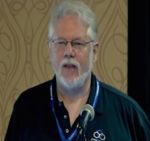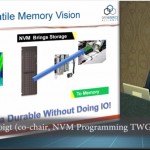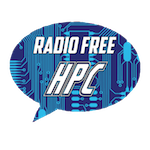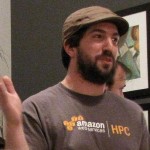“The Relion 2808GT was designed to deliver maximum compute power with a minimal datacenter footprint and maximum efficiency. The system supports eight GPUs or coprocessors in two rack units and provides a higher compute density that any other server on the market. Configured with eight NVidia GPUs or eight Intel Xeon Phi co-processors a single Relion 2808GT can achieve over 8TFLOPs of double precision floating point peak performance.”
Archives for April 2014
OpenFabrics Interfaces Working Group Architecture
“Verbs and RDMA-based networks will continue to be important focus areas, but with the new OFWG, the OFA is expanding its focus to include additional application-centric APIs that could be better suited to other areas and technologies,” said Jim Ryan, chairman, OFA. “Application-centric I/O is an extension of the approach historically taken by the OFA, and we will use our expertise in this area to guide the open source development of APIs and I/O libraries.”
Supercomputing the Link Between Alzheimer’s and Cancer
Researchers from the Houston Methodist Research Institute used supercomputers to discover a shared genetic pathway between Alzheimer’s and cancer.
NVM as a Disruptive Technology
NVM is coming. In this series of videos from the OpenFabrics International Developer Workshop 2014, Jim Ryan and Doug Voight describe Non-Volatile Memory as a disruptive technology for HPC.
Thomas Sterling Presents: ParalleX Execution Model for Exascale Astrophysics
“This talk describes an experimental methodology, ParalleX, that addresses Exascale challenges through a change in the fundamental model of parallel computation from that of the communicating sequential processes (e.g., MPI) to an innovative synthesis of concepts involving message-driven work-queue execution in the context of a global address space.”
How Bezo’s Law Will Drive Migration to the Cloud
Over at GigaOM, by Greg O’Connor from AppZero writes that the future of cloud computing is the availability of more computing power at a much lower cost. Along these lines, he proposes Bezos’s Law. “Named for Amazon CEO Jeff Bezos, I define it as the observation that, over the history of cloud, a unit of computing power price is reduced by 50 percent approximately every three years.”
Radio Free HPC Looks at the Seven Myths of SSD vs. HDD Pricing
In this podcast, the Radio Free HPC team looks at the Seven Myths of SSD vs. HDD Pricing, one of Henry’s recent features at Enterprise Storage Forum. It got picked up on Slashdot, and the comments are flying all over the industry. In a nutshell, Henry thinks that the notion of SSDs replacing spinning […]
Video: MPI Requirements of the Network Layer
In this video from the OpenFabrics International Developer Workshop 2014, Nathan Hjelm from LANL presents: MPI Requirements of the Network Layer.
Rob Farber Launches TechEnablement Blog
Industry Analyst Rob Farber has launched his new TechEnablement Blog. With in-depth features and tutorials on HPC topics, TechEnablement is designed to enable you to work with the latest technology. As part of the new site, Farber has posted study guides on CUDA, OpenACC, OpenCL, and Intel Xeon Phi.
Video: Paul Grun Kicks Off the OpenFabrics Workshop 2014
In this video from the OpenFabrics International Developer Workshop 2014, Paul Grun from OFA presents: Welcome, Introductions and Workshop Goals. “The 10th Annual OpenFabrics International Developer Workshop held on March 30-April 2 offered a multi-day event dedicated to the development and improvement of OpenFabrics Software (OFS). The Workshop kicked off Sunday, March 30, with a keynote from Dr. Thomas Sterling, Executive Associate Director and Chief Scientist at CREST. Presentations began the following morning covering topics focused on I/O for Exascale systems and Enterprise applications and included interest areas such as distributed computing, storage and data access and data analysis applications.”












